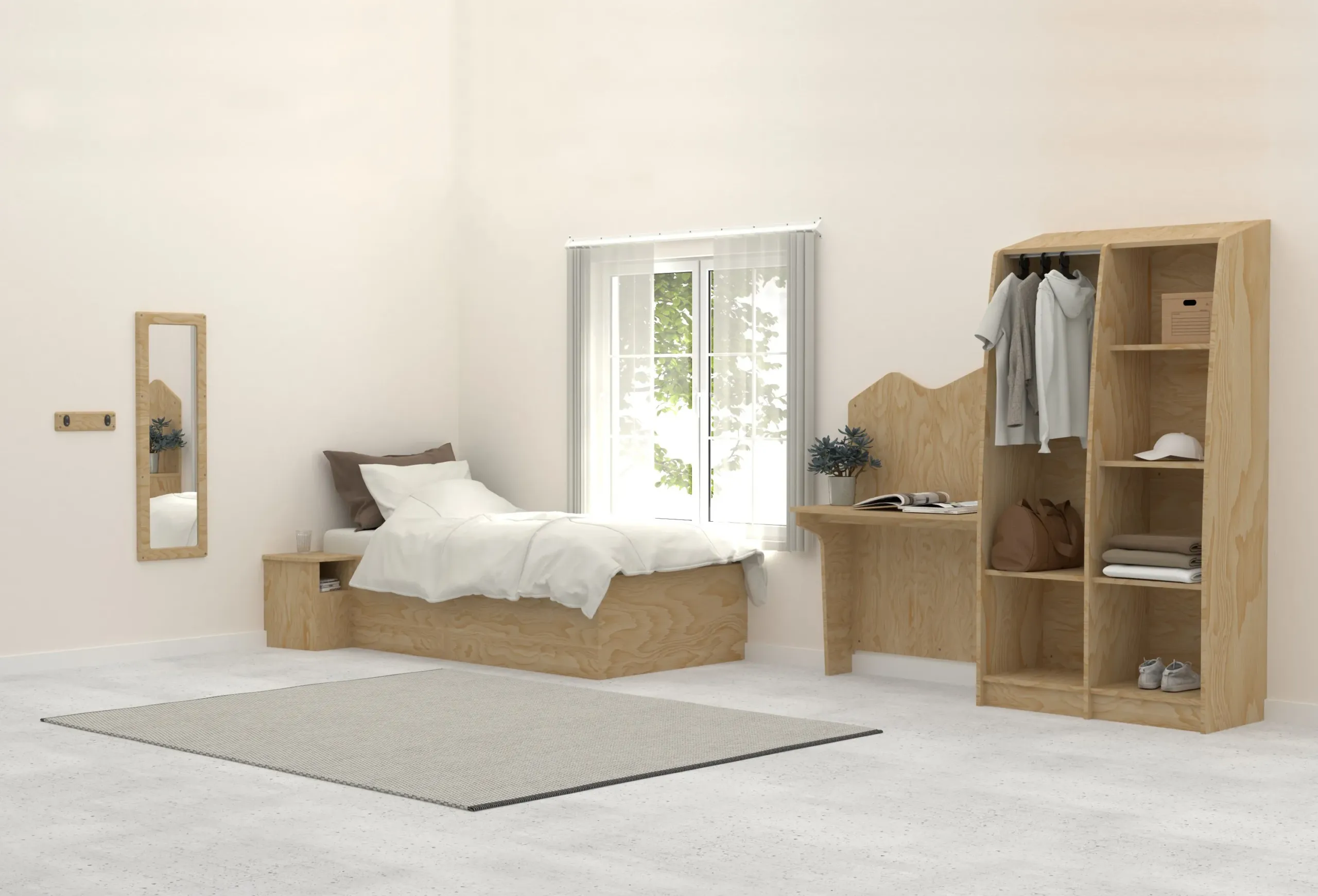Sustainable and safe fixed furniture
Fixed furniture is often a necessary and appropriate choice in environments where wear and tear is significant and when safety demands it. Our fixed furniture is designed to withstand heavy wear over time while retaining its functionality. This is achieved by gluing the furniture with dowels in a traditional manner that ensures the strength of the construction. Furthermore, when the furniture is securely mounted, the strength is even higher, preventing furniture parts from being detached. The robustness contributes to the room looking good and maintaining its functions over time. Additionally, our design results in a tight connection to the wall, reducing the risk of hiding places.

Roya & Aram – Our unique new interior range
Our range of fixed interior products is carefully deigned with consideration for use in environments with high security requirements, such as youth care facilities, treatment homes, certain parts of psychiatry, and correctional facilities.
Here is why you should consider Roya & Aram for your facility
Interview with the designers of Roya & Aram
Franz James, the company’s founder and designer, holds a PhD in design and is a Associate Professor at HDK-Valand, Campus Steneby at the University of Gothenburg. The Roya and Aram series are developed by Franz and Nana Seydani.
What considerations did you make regarding material selection for the interior, especially considering safety aspects?
“The fixed interior is glued, not joined with metal fittings as is common in public furniture. This makes it much more difficult to disassemble, reducing the risk of loose parts being used as tools against the rest of the furniture or against people…


Adapting fixed furniture to a room
Healsafe Interior’s fixed fittings are designed for high-security environments in a balance between security and design. The range includes shelves with shallow depths, backs designed to fit snugly against walls and mouldings, and angled wardrobe tops to facilitate searching. The functions have been integrated into the design to maintain an overall aesthetic and counteract what could otherwise be perceived as an institutionalised and security-heavy design language.
The interior is designed to be flexible and customisable. The parts can be customised according to placement, e.g. there are beds for left or right corners.
We offer interior design proposals where we draw and visualise the furniture according to your specific dimensions. To fit existing environments, we can also customise the different parts as desired. It is also possible to choose from a variety of laminates. In our sales material we have chosen to show the series Roya in birch and Aram in walnut.
Get in touch!
If you are interested in learning more about Roya & Aram fixed furniture and how the furniture fits into your facility – get in touch with us.
We can help you with design ideas, drawing up fixed interior blueprints for your specific project, or help you with more information.
Call us +46 706 78 54 00
or use the form to send us your contact information. We will get back to you shortly.



